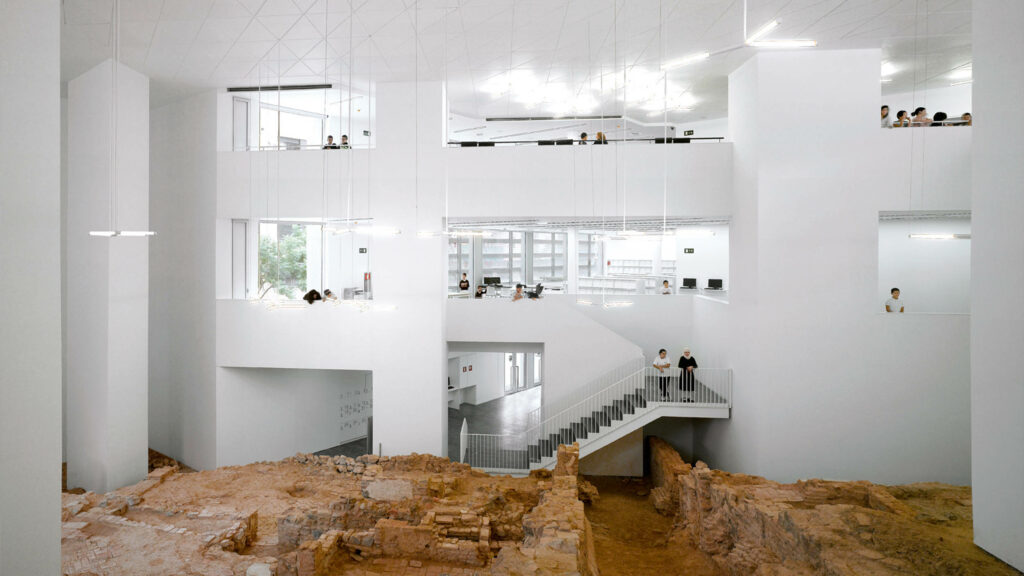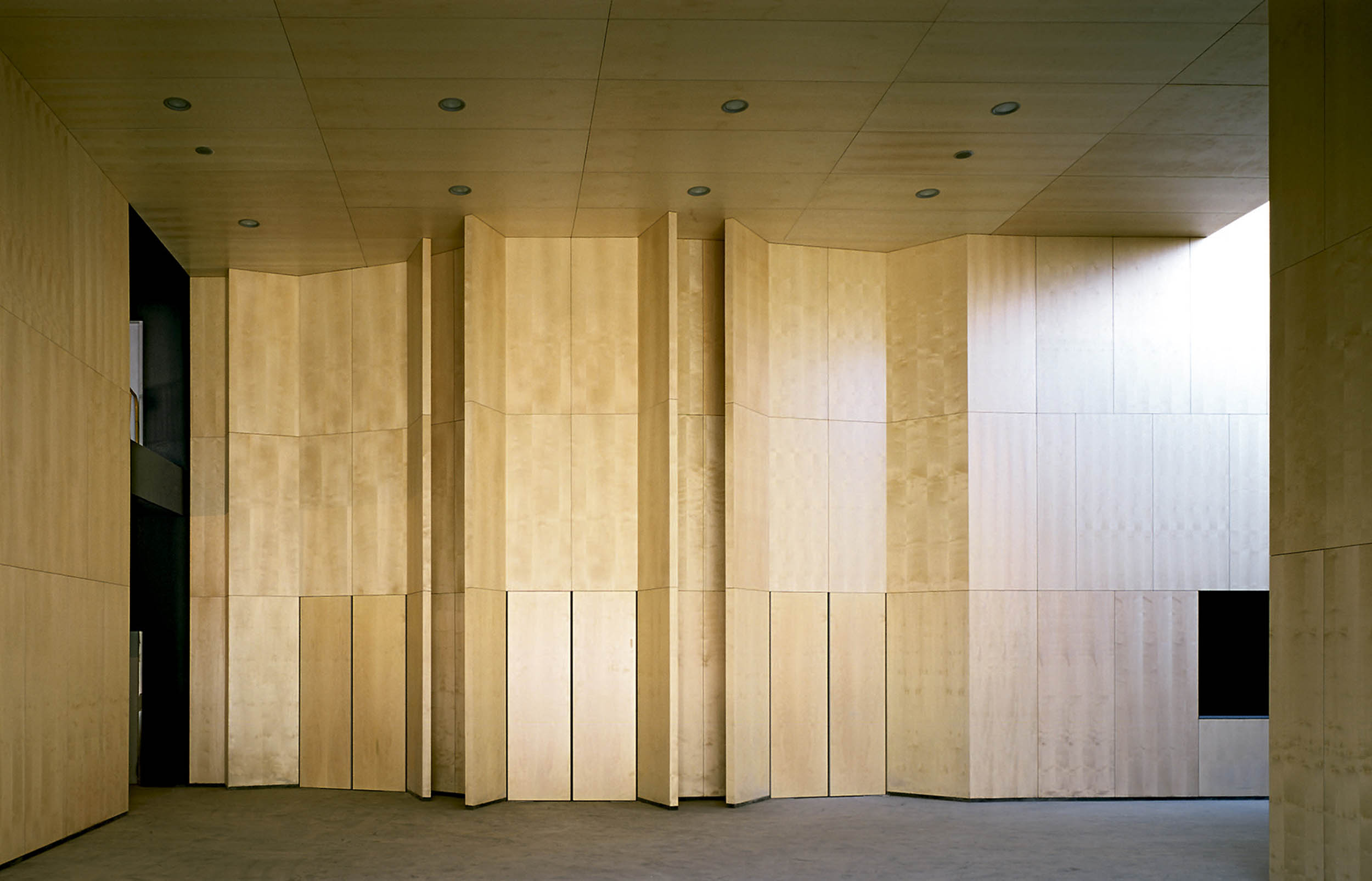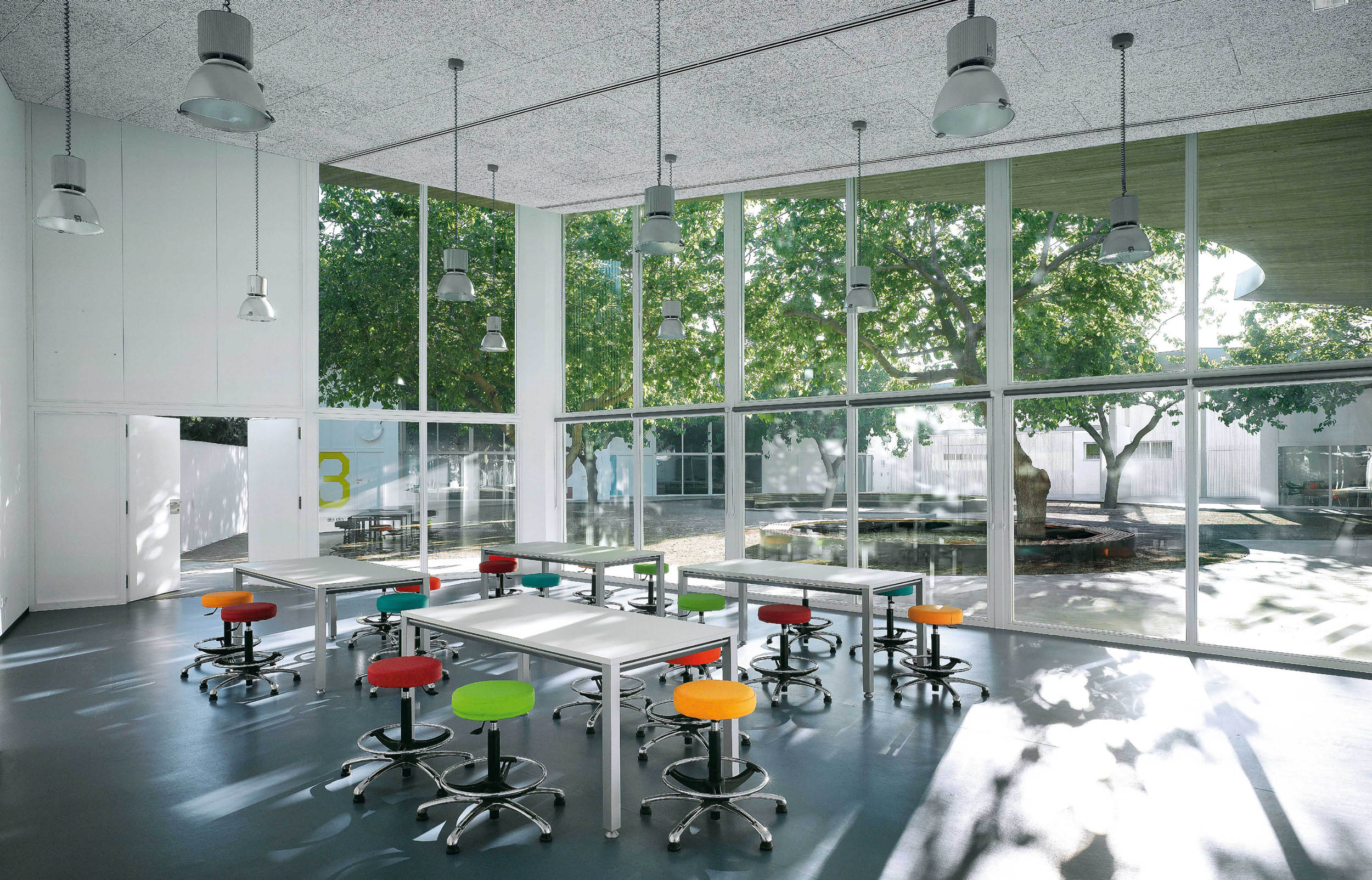Together with Ignacio Pedrosa she founded the firm Paredes Pedrosa Arquitectos, which has achieved widespread international acclaim with its inescapable public vocation.

Ángela García de Paredes is an architect and professor in the Department of Architectural Projects at the Madrid School of Architecture. Together with Ignacio Pedrosa, she directs the Paredes Pedrosa architects studio. Much of her work, such as the Valle-Inclán Theater in Madrid, the Ceuta Public Library or the Villa Romana de La Olmeda Museum in Palencia, has been built after winning a public competition.



Ángela García de Paredes de Falla (Madrid, 1958) obtained in 2014 Medal of Merit for Fine Arts, for her work in the Paredes Pedrosa Arquitectos studio together with her husband Ignacio Pedrosa. She comes from a saga of architects, since she is the daughter of the architect José María García de Paredes, to whose work she dedicated her doctoral thesis in 2015, and the granddaughter of Germán de Falla, also an architect and brother of the famous composer Manuel of Fault. She began working as an architect collaborating, already with Ignacio Pedrosa, in the studio of José María García de Paredes, especially recognized for architecture dedicated to music, such as the Manuel de Falla Auditorium in Granada (1974-1978) or the Palau de the Music of Valencia (1984-1987). After his death in 1990, the studio became Paredes Pedrosa arquitectos Estudio de Arquitectura, with which they have won numerous awards, from the EuroPAN competition for young architects in 1991 to the Mansilla Award, the Gold Medal International Prize for Sustainable Architecture, the Architecture Plus a+ Award from the Popular Children’s University of Gandía in 2012 and the AADIPA European Award for intervention in heritage by the Ceuta Library in 2015.


There is a voluntary departure from the iconic in his architecture, which starts from the intention of creating a place instead of an object, trying at the same time to integrate, improve or complete its environment, be it historical or merely physical. One of his first works, the town hall of Valdemaqueda, a small town near Madrid, manages to create the public square that the town needed and a building that integrates into the small scale of the town and, at the same time, into the landscape of the city. Sierra de Madrid. The municipal library of Ceuta, an autonomous Spanish city located in North Africa, integrates inside the ruins of the Muslim city from the 14th century, while on the outside it adapts its different accesses to the significant slope of the land and its openings to the different city views. The Valle-Inclán Theater, winner of the 2007 Spanish Architecture Award, provided the opportunity to build, in addition to a building, a piece of the city in one of the most traditional neighborhoods of Madrid. The building is divided into three blocks, which are set back to form a square that is linked to the Lavapiés square and open up to form three viewpoints that illuminate the square at night, thus creating an authentic urban scene.


On the contrary, the Archaeological Museum of Almería closes in front of an environment made up of expressways and large buildings, forming a compact volume illuminated from above. The María Moliner library is also closed off from a suburban setting made up of semi-detached single-family homes by means of a solid plinth, opening instead to two patios that act as skylights and generate reading areas around them.


Another interesting aspect of its architecture is the treatment of the envelope, obtaining interesting results with austere resources. In the María Moliner library, texture is added to the opaque plinth that surrounds the building by engraving the white concrete with a metal mesh. In the Palau de Congressos de Peñíscola, a permeable diaphragm is built between the lobby and the park in front of it through a lattice made of ceramic pieces, thus making reference to local tradition. In the Roman villa La Olmeda, a unitary ensemble is obtained by means of a translucent metallic envelope that gives unity to the scattered remains of an ancient Roman villa while integrating into the horizontality of the landscape of the Castilian plateau.

